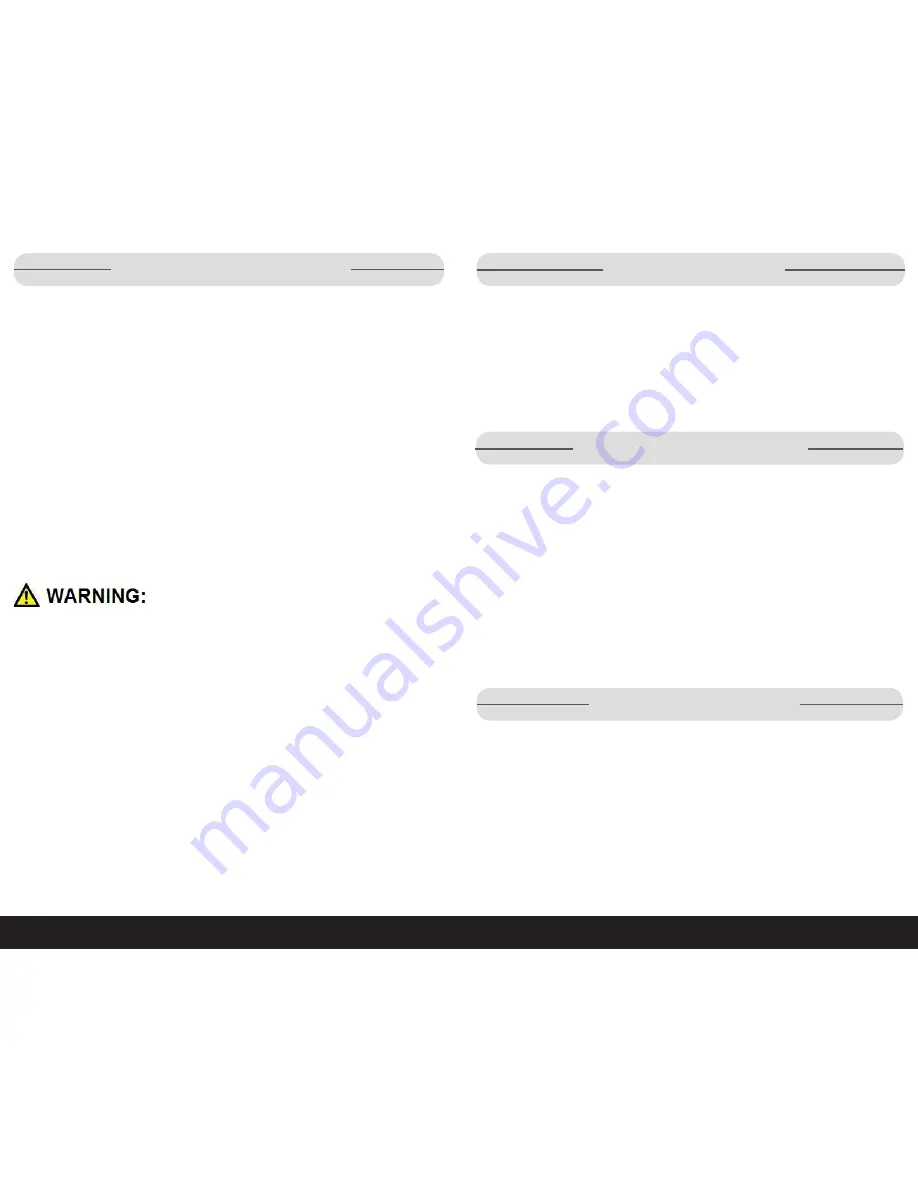
7
6
1
•
888
•
557
•
3848
Wards.com
How to Use the Drill
Prior to Use
1. Charge the battery following the instructions in this manual.
2. Confirm that the workpiece, especially ones that are small or lightweight, is
securely anchored or clamped to prevent it from slipping.
3. Make sure the direction/lock selector is set in the locked (middle) position.
Operating the Drill
1. Insert the battery into the base of drill, clicking it securely into place.
2. While the drill is locked (direction selector is in middle position), open the chuck
by turning clockwise to loosen.
3. Center the drill or screw bit in the middle of the chuck and tighten securely by
turning counter-clockwise.
4. Use the torque dial to set to the drilling function (indicated by icon) or to set the
proper torque.
IMPORTANT:
Torque setting is based on the type and size of screw and the type
of material into which the screw is being placed. Always start with the lowest setting
and increase in increments.
5. Set gear selector to high (0
–
1100 rpm) or low (0
–
400 rpm).
6. Move the direction selector to the left for forward drilling/fastening or to the right
for reverse.
NEVER move the direction selector while the drill is in operation.
7. Slowly press the variable speed power trigger to start operation. The power light
and battery charge indicators will illuminate. If only the red indicator is lit, the
battery needs charging.
• When drilling a hole, use only enough pressure to follow the drill as it drills the
hole in the material. Do NOT force the drill.
• When inserting or removing a screw, use light pressure to keep the screw bit
in the head of the screw.
8. Release the power trigger to stop operation.
9. Move the direction selector to the locked (middle) position.
Drilling Tips
Overload Protection
The drill and its battery have built-in safety features to prevent damage to the tool
and battery during use.
• During short-term high-load situations, the overload protection will automatically
turn off the drill. If this happens, release the trigger, wait a few seconds, ensure
that there is no load and then restart the drill. For high-load situations that
occur for an extended period of time, wait until the drill returns to normal
operating temperature before trying to restart it.
• Adverse temperatures can occur in direct sunlight and should be avoided.
• When the battery becomes discharged, the low-voltage protection turns off the
drill automatically. Recharge the battery to continue use.
• When drilling into a slippery surface, such as tiles, place a piece of masking
tape on the surface to help prevent the bit from slipping.
• When drilling into metal, first use a center punch to create an indention on the
spot for drilling. The indent will help hold the bit in place.
• When drilling into metal use a cutting oil, appropriate for the material being
drilled, for cooling and lubrication.
Charging the Battery
IMPORTANT:
Batteries need to be fully charged before initial use.
Do NOT charge batteries in direct sunlight. Charge in temperatures between 41
–
104
°
F.
1. Remove battery from drill/worklight by pressing the battery release button and sliding
it forward. If the battery feels overly warm, allow it to cool down before charging.
2. Connect the battery charger to an electrical socket. The green light will illuminate.
3. Insert the battery into the charger. While the battery is charging, the red light will
blink and the green will stay steady. Once the battery is fully charged, both red and
green lights will shine steadily.
4. To remove the battery from the charger, press the release button on the battery.
IMPORTANT:
Batteries should be fully charged for long-term storage.






